The Beach Boys captured California’s sunny vibe.
Not one celebrates SoCal’s extremes, though.
The Valley can bake in triple digits, and winter nights can dip below freezing — just not in the same season. So much for the California dream. Angelenos must prepare for both extremes, especially in a time of spiking energy prices.
So, where should you start? Below, we’ve listed 10 energy-saving upgrades, ranging from simple to complex, to enhance indoor comfort and boost home value.
1. Install a Cool Roof
Asphalt roofs can reach temperatures of 150°F or higher in the Los Angeles sun, radiating heat directly into your home.
A cool roof is a smart alternative designed to reflect more sunlight and absorb less heat. Light-colored shingles, tiles, or specialized coatings keep your home cooler, lower your air conditioning bills, and reduce strain on your HVAC system.
- Why it works for LA: Reflects intense sun, keeping attic temperatures down.
- Pro Tip: Local utility providers may offer rebates for certain cool roofing materials, making this one of the most effective upgrades for SoCal homeowners. The Federal government also allows a Residential Energy Tax Credit.
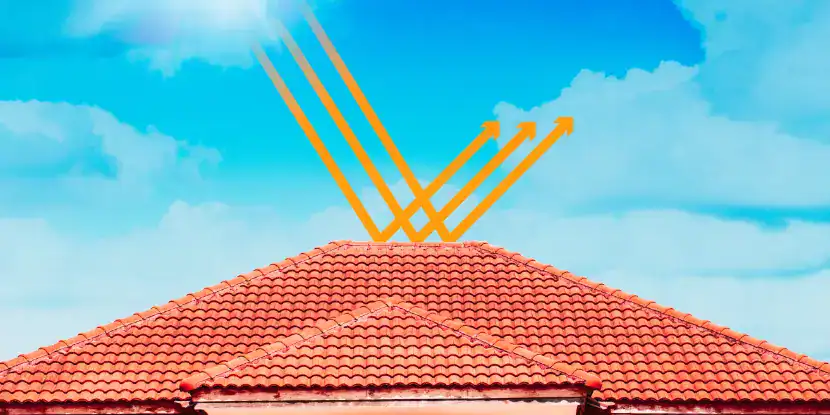
Roof tiles featuring Color Shield technology protect against heat and UV rays.
2. Go Solar & Add Battery Storage
With over 280 sunny days a year in Los Angeles, a solar panel system can offset a significant portion of your electricity use.
- Solar panels reduce your dependence on the grid and protect you from rising energy costs.
- Systems like the Tesla Powerwall or Enphase batteries let you store excess energy for nighttime use or power outages.
- Combined, solar and storage can help you achieve near energy independence while boosting your home’s value and providing backup power during outages.
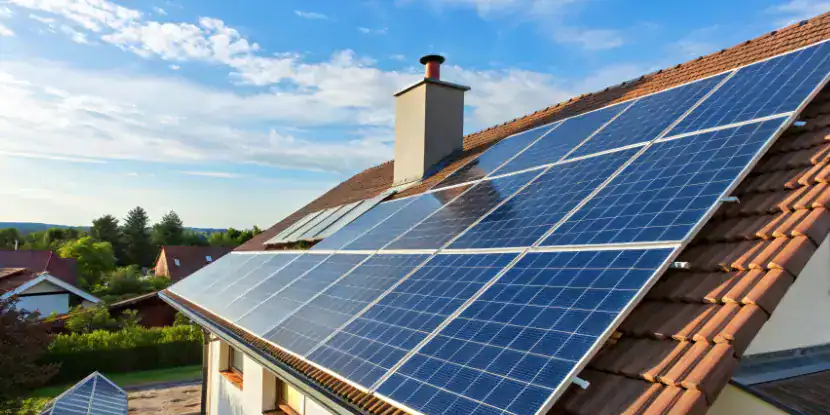
Solar panels installed on a house rooftop.
3. Upgrade to Energy-Efficient Windows
Homes built before the early 2000s often lose significant energy through windows. Single-pane glass offers minimal insulation, allowing summer heat to pour in and winter warmth to escape.
Modern double- or triple-pane windows with low-emissivity (Low-E) coatings reflect infrared light, keeping heat outside in the summer and inside in the winter. In a city with dramatic temperature swings, efficient windows stabilize indoor comfort.
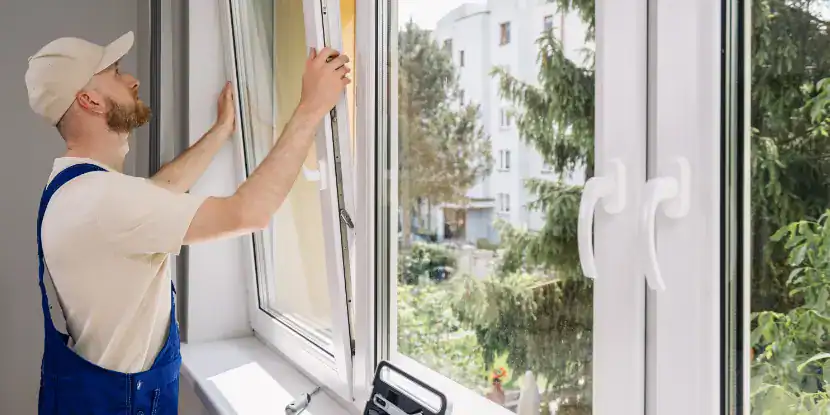
A worker installs a double-pane window.
4. Install a Smart Thermostat
Heating and cooling account for nearly half a typical home’s energy costs, but much of that energy is wasted when no one is home.
Smart thermostats, such as Nest or Ecobee, solve this by learning your schedule and automatically adjusting the temperature.
For example, it can cool your home just before you arrive from work but allow warmer temperatures while you’re away. With smartphone control, you can adjust temperatures remotely and track your energy usage. Many users save 10–20% on their annual heating and cooling bills from this upgrade alone.
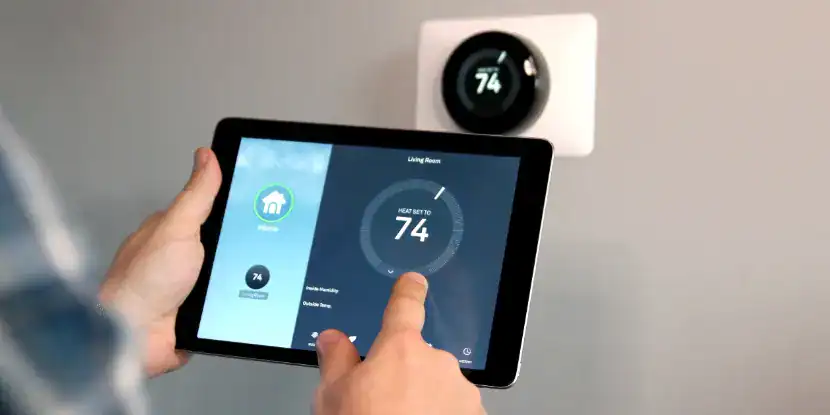
A homeowner changes the settings of a smart thermostat.
5. Improve Attic & Wall Insulation
Insulation is one of the most overlooked yet crucial upgrades in older LA homes. Poorly insulated attics and walls allow hot air to seep in during the summer and escape during the winter.
- What to use: Fiberglass batts, spray foam, or cellulose insulation.
- Where to focus: The attic is a great starting point and can cut energy bills by 15% or more.
- Bonus step: Combine insulation with air sealing around vents and ducts to help your home maintain a steady temperature with less effort from your HVAC system.

An attic with fresh layers of blow-in insulation.
6. Install a Whole-House Fan
A whole-house fan is a powerful and efficient supplement to central air conditioning. It works by pulling cool outdoor air through open windows and pushing hot indoor air out through attic vents.
In the evening, when temperatures drop, a whole-house fan can cool your home naturally. The system uses a fraction of the energy of an AC unit.
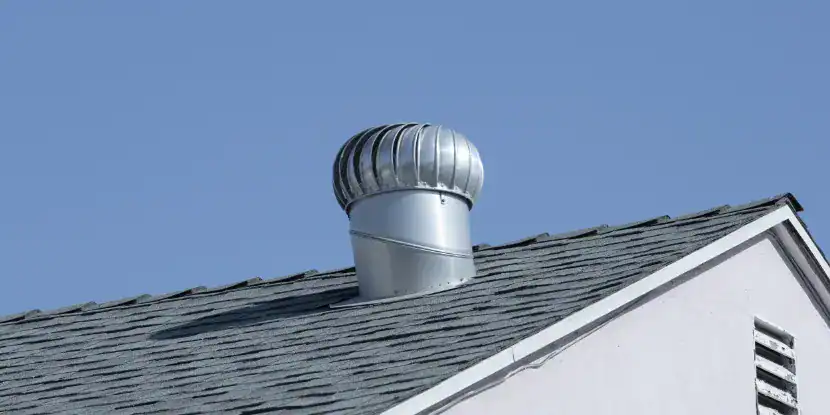
A whole-house fan will expel hot air through a roof vent.
7. Upgrade to a High-Efficiency HVAC System
If your HVAC system is more than 10 years old, it’s probably costing you more than it should.
Today’s ENERGY STAR–rated air conditioners and heat pumps incorporate advanced technology to provide the same comfort with less power consumption.
Look for a high SEER (Seasonal Energy Efficiency Ratio) rating — 16 or higher is ideal for the Southern California climate. Regular maintenance and proper duct sealing ensure maximum performance year-round.
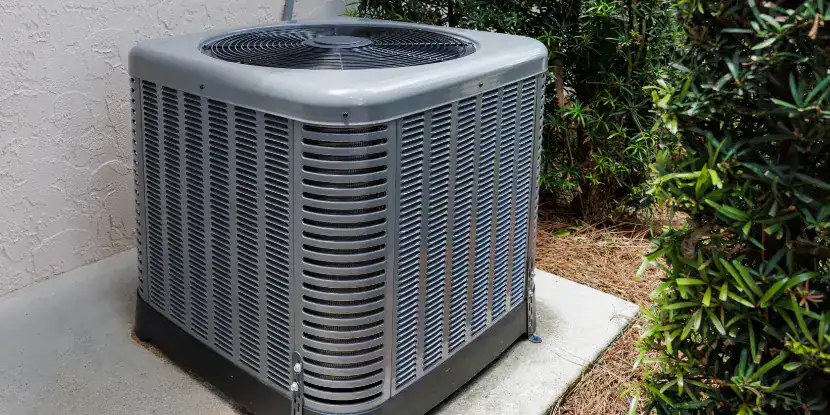
Look for an air conditioner with a high SEER (Seasonal Energy Efficiency Ratio) rating — 16 or higher.
8. Switch to LED Lighting
Lighting accounts for about 10–15% of a typical household’s electricity use. Replacing old incandescent or CFL bulbs with LED lighting can slash that figure by up to 80%.
LEDs last up to 25 times longer and generate very little heat, which is a big help in the summer when every degree counts. For even greater control, consider smart bulbs that can dim automatically or adjust their color temperature throughout the day.
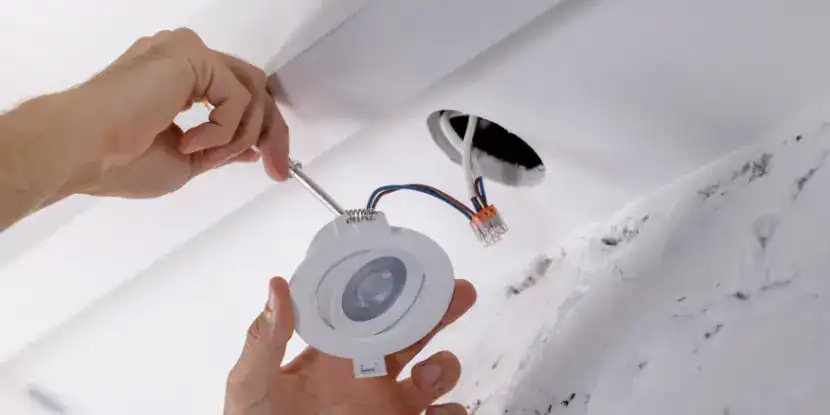
Innovative ceiling installation with fiber optic cable for enhanced lighting and connectivity solutions.
9. Install a Tankless Water Heater
Traditional water heaters constantly heat and reheat water in a large tank, even when it’s not in use.
Tankless (or on-demand) water heaters eliminate standby energy loss by heating water only when needed. They’re smaller, more efficient, more durable, and they provide an endless supply of hot water. The upfront cost is higher, but the long-term savings and space efficiency make it a worthwhile investment for LA homeowners.
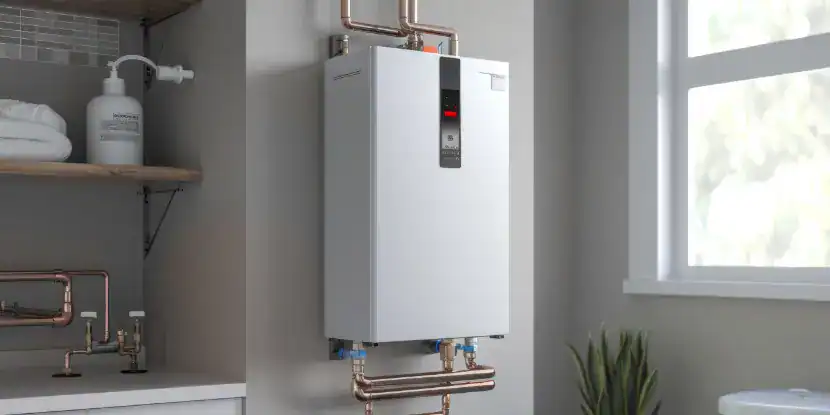
A tankless water heater provides a near-instant supply of water on demand.
10. Seal Doors & Windows
Even small air leaks around doors and windows make your HVAC system work overtime. Replace old weatherstripping and caulk window frames to stop drafts. Complete this simple weekend DIY project for a surprisingly big impact on comfort and energy savings.
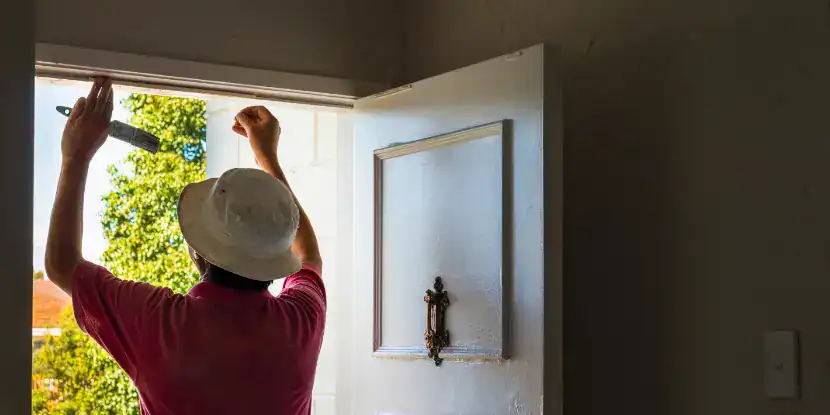
A homeowner installs weather stripping in a door frame.
FAQs: Energy-Efficient Home Upgrades
Q: Which energy-efficient upgrade offers the best return on investment in LA?
Attic insulation provides one of the highest ROIs. It’s a relatively low-cost project that can reduce heating and cooling bills by up to 15%, paying for itself quickly.
Q: Is a cool roof noticeable from the street?
Not necessarily. Cool roofs are available in various colors and materials, including some that resemble traditional shingles. You can choose a style that matches your home’s aesthetic while still getting the energy-saving benefits.
Q: How do I know if my windows need replacing?
Signs include noticeable drafts, condensation between panes, difficulty opening or closing windows, and high energy bills. If your windows are single-pane or over 20 years old, it’s time for an upgrade.
Q: Can I install a smart thermostat myself?
Most smart thermostats are designed for DIY installation and come with step-by-step instructions. It usually takes less than an hour if you have basic wiring knowledge.
Q: Do solar panels work on cloudy days?
Yes, though their output is lower than on bright, sunny days. This is why Los Angeles, with its high number of sunny days per year, is an ideal location for solar power.
Q: What’s a SEER rating?
SEER stands for Seasonal Energy Efficiency Ratio. It measures an air conditioner’s cooling output during a typical season divided by its energy consumption. A higher SEER rating means greater energy efficiency.
Q: Is a whole-house fan a replacement for air conditioning?
Not entirely. A whole-house fan is most effective when the outside air is cooler than the inside air, like on summer evenings. It’s an excellent supplement to your AC, allowing you to turn off the more energy-intensive system and cool your home naturally.

